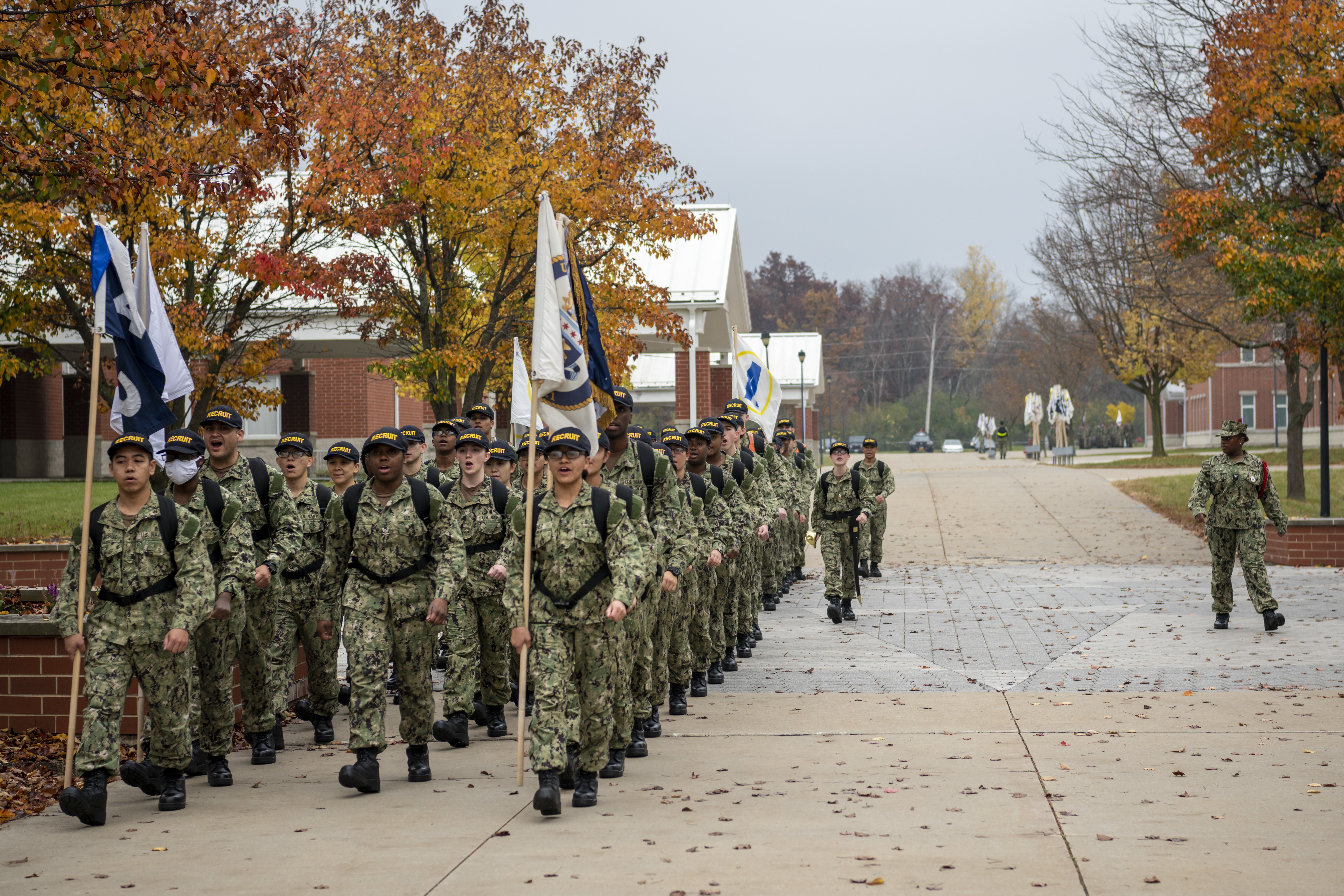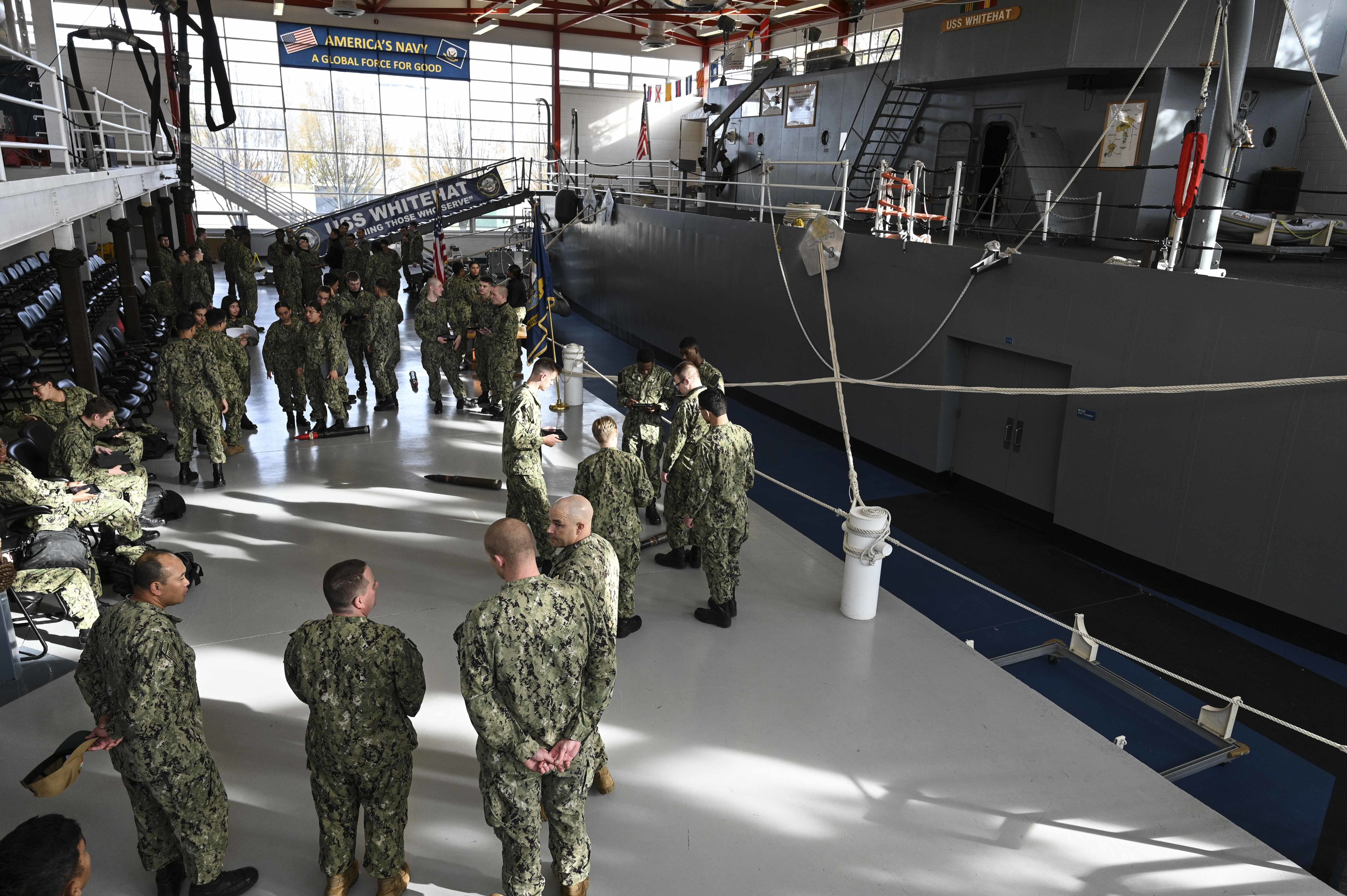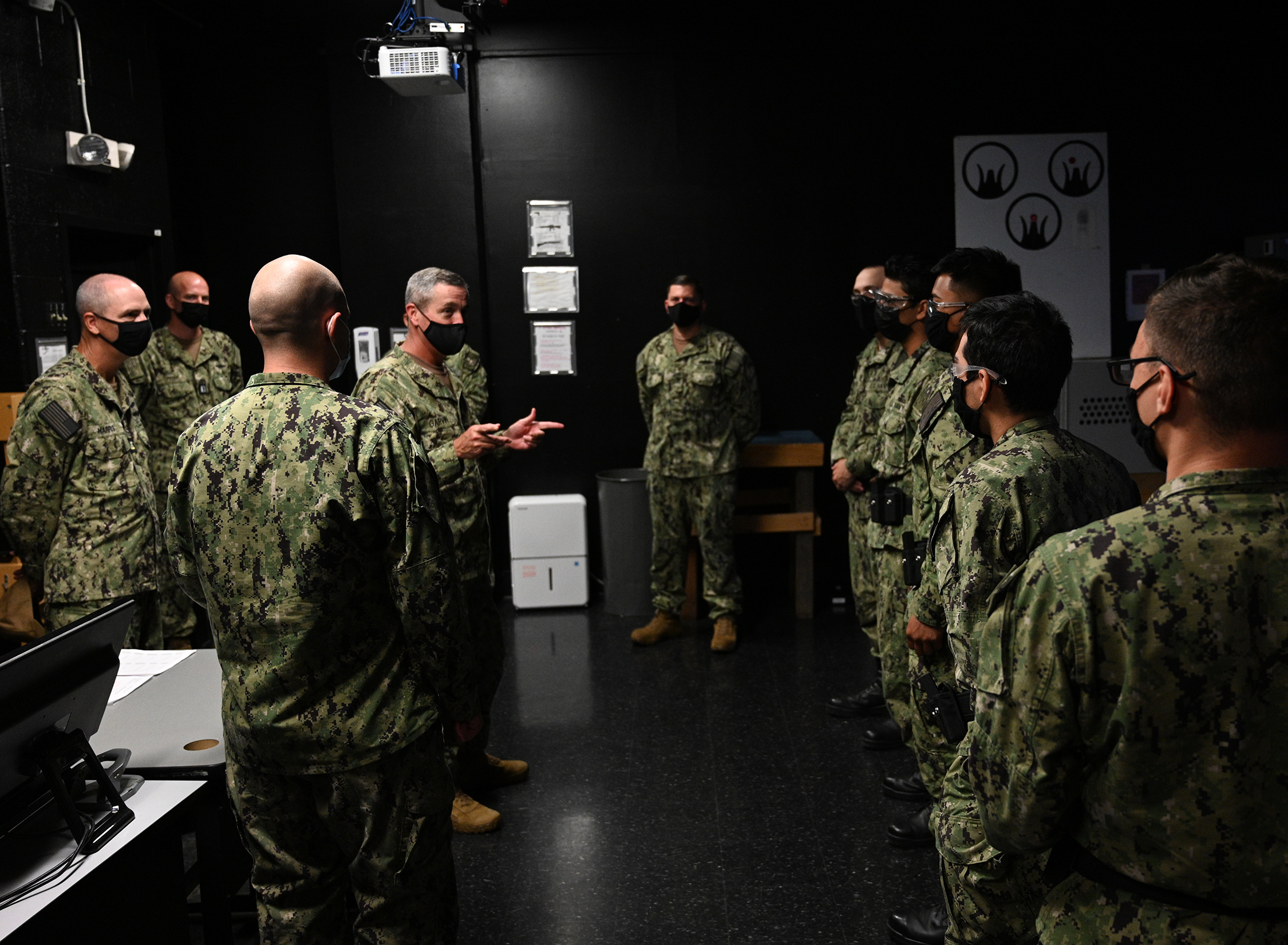
This post is part of a series looking back at the top naval stories from 2022.
The Navy, like the other military branches, spent 2022 facing a bleak recruiting environment, one that is expected to be harder in 2023. Over the past year, the sea service introduced several new policies, from increasing age limits to new billet programs, aimed at getting new sailors and keeping the ones already in the Navy.
In Fiscal Year 2023, the Navy will need to recruit 37,700 active-duty sailors in order to meet the needs of the service, USNI News previously reported. That’s an increase of 3,400 sailors over the recruiting goal for FY 2022. The Navy was able to reach its FY 2022 goal by just 42 sailors.

The Navy is not alone in facing a tough recruiting environment. All services have discussed the increasingly difficult atmosphere for recruiting new service members.
Marine Corps commandant Gen. David Berger wrote a piece for Naval Institute’s Proceedings about the challenges he saw facing the Marine Corps.
Many experts and military officials, including Berger, have pointed to the strong job market as one of the reasons that there are fewer people interested in military service. Companies like Amazon are seen as competitors to the military.
While Berger did not discount the strong job market, he also raised other issues, like a smaller eligible population, as one of the reasons that the services are struggling to recruit. One issue he saw is the possibility that the pool was shrinking to those who had family members with military experience.
“A growing percentage of those serving in uniform have a close relative who also served (or is currently serving),” Berger wrote in the Proceedings piece.
“In other words, those who are most familiar with the military are most likely to enlist.”
The recruiting pool for all services is also hurt by the lack of eligibility, retired Rear Adm. Robert Besal, who works with advocacy group Mission Readiness, told USNI News in December.
Childhood obesity, health concerns, prior criminal activity, which includes drug abuse, and failure to pass entrance exams have whittled down the population of 17-21-year-olds who can serve. Most recent numbers suggest that 77 percent of 17-21 years olds are ineligible to serve.
Finding New Sailors

While the Navy was able to meet its recruiting goals for enlisted active-duty sailors in FY 2022, it did not have the same success for active-duty officers or reserve sailors and officers.
While recruiting goals are higher for enlisted active-duty sailors in FY 2023, the end strength for the sea service is down.
“The Fiscal Year 2023 recruiting demand of 37,700 is the number of new sailors required to achieve Fiscal Year 2023 end strength based on current sailor inventory and projected Fiscal Year 2023 losses,” Capt. Jodie Cornell, a spokesperson for the chief of naval personnel, told USNI News in October.
The Navy ended FY 2022 with an end strength of 286,487, slightly higher than the goal from the FY 2022 budget proposal. The projected end strength is a decrease of 382 between FY 2022 and FY 2023.
In order to meet the recruiting goal for FY 2023, the Navy has made a number of policy changes in 2022. The first was using a 16-year-old law created to allow the Army to raise its recruiting age.
The Army, which has a recruiting age limit of 39 with waivers accepted until age 45, had set its recruiting age at 42 after Congress made a new law that raised the recruiting age.
The Navy used that law in 2022 to increase its recruiting to 41, as long as new sailors report to basic training before they turn 42.
In another effort to increase the recruiting pool, the Navy also said it would take people who scored lower on one of the entrance exams.
To join the Navy, recruits have to take both the Armed Forces Qualification Test and the Armed Services Vocational Aptitude Battery. The Armed Forces Qualification Test (AFQT) grades on a percentile scale, where each candidate taking the test at the time is compared to each other to determine how they did. It is a similar process to the Graduate Record Examination, used by graduate programs.
The sea service will now take those who score in lower percentiles for the AFQT as long as they still score well on the Armed Services Vocational Aptitude Battery.
“As we continue to navigate a challenging recruiting environment, changing the AFQT requirement removes a potential barrier to enlistment, allowing us to widen the pool of potential recruits and creating opportunities for personnel who wish to serve,” Cmdr. Dave Benham, a spokesperson for Navy Recruiting Command, told USNI News in a statement.
Retain, retain, retain

As much as the Navy focused on bringing in new sailors, the sea service also looked at new programs and policies encouraging people to stay.
This tactic is also being used by the Marines, which is a shift in their thinking. The Marine Corps is known for high turnover, but in 2021, the service began looking at how it could keep Marines and their skill sets in the force longer.
The Navy has 9,000 gaps in at-sea billets, USNI News previously reported. The number has grown since 2017.
Cmdr. Richard Chernitzer, a spokesperson for Naval Personnel Command, told USNI News in a statement that this is due to a misalignment between personnel and the promotion system.
The Navy is attempting to fix the issue with billet-based promotion systems. The sea service introduced the pilot for its new senior enlisted marketplace in 2022. The new billet-promotion-based system is similar to the detailing marketplace assignment policy introduced in December 2021.
Under the new senior enlisted marketplace, a screening board will look at all E-8s and create a list of those eligible. The top 15 percent of the list will be identified as merit screened.
Eligible E-8s will be able to apply for an E-9 position. E-8 sailors can advance to E-9 if they match with an E-9 position, complete required training, commit to serving the tour length and report to the new position, USNI News previously reported.
The senior enlisted marketplace is just one of the new policies introduced by the Navy in the past year. The Navy announced in December that it was suspending high-year tenure for two years, which would allow more service members to stay in the sea service.
The Navy also rolled out a pilot aimed at keeping submarine officers in the service. Under the program, submarine commanding officers special mission who had at least 19 years but no more than 25 years of service could receive $20,000 per year if they stayed in the service for three to five additional years.
Around the same time, the Navy introduced a pilot aimed at senior enlisted sailors. Under the SEA2P pilot program, sailors could apply for senior leadership billets in the Nimitz Carrier Strike Group, the Bataan Amphibious Ready Group and on USS George Washington (CVN-73)





